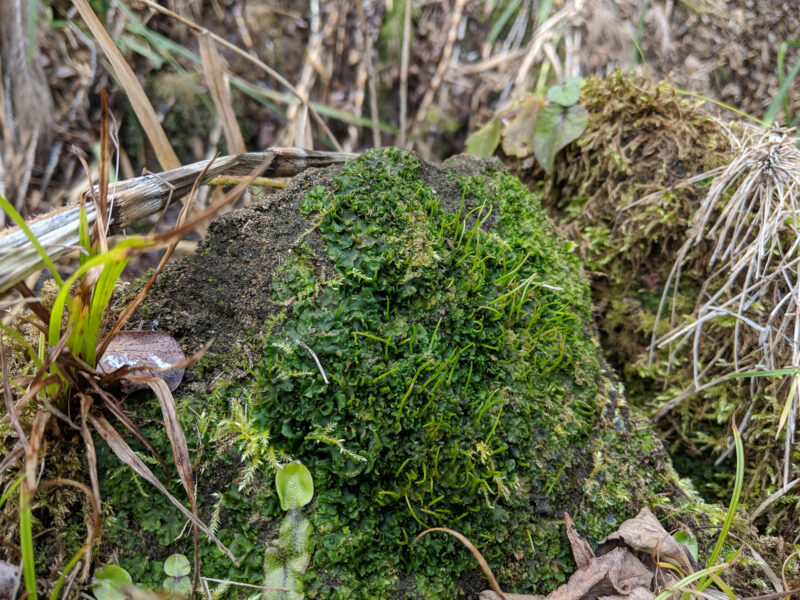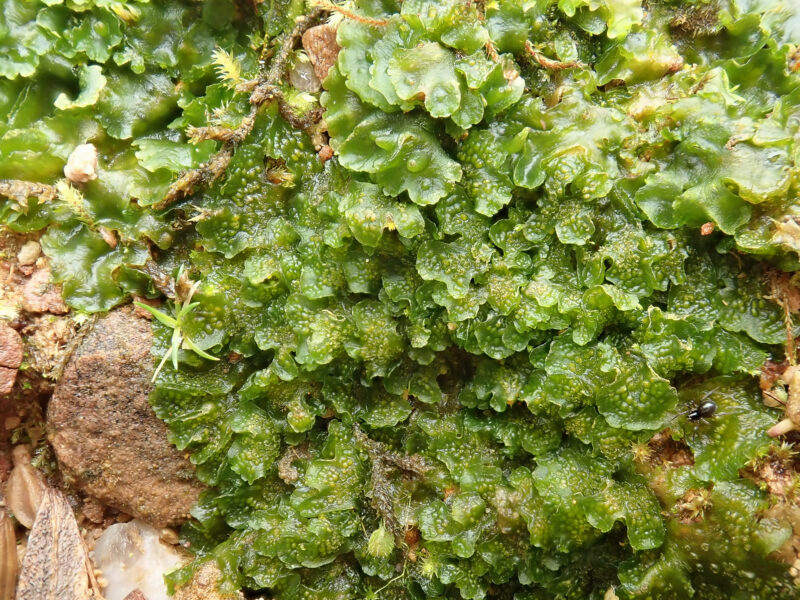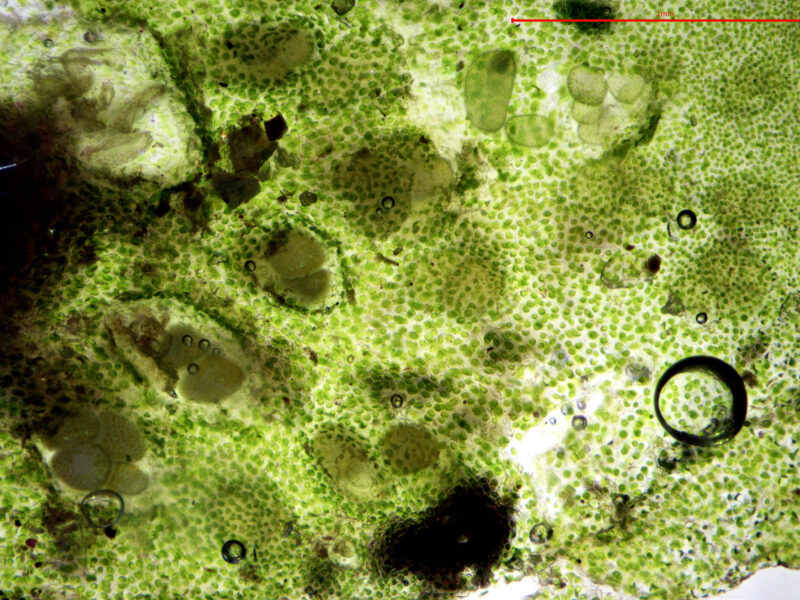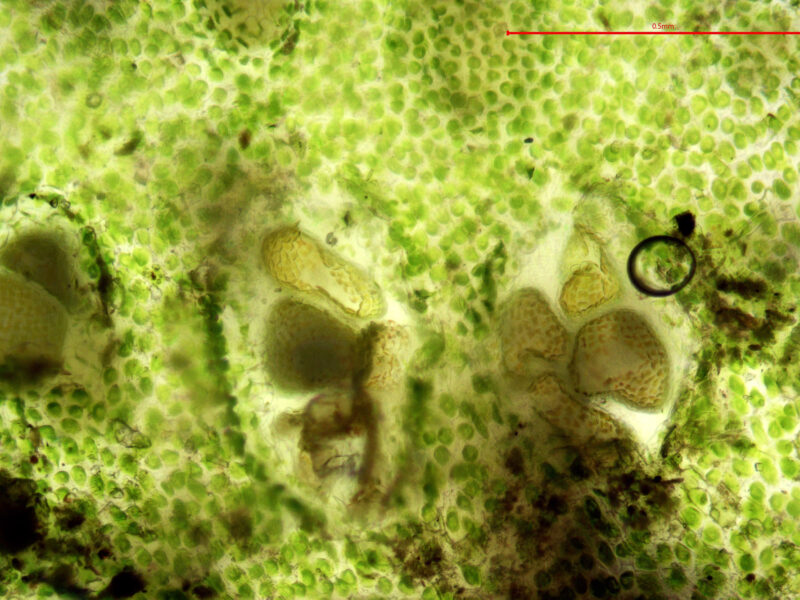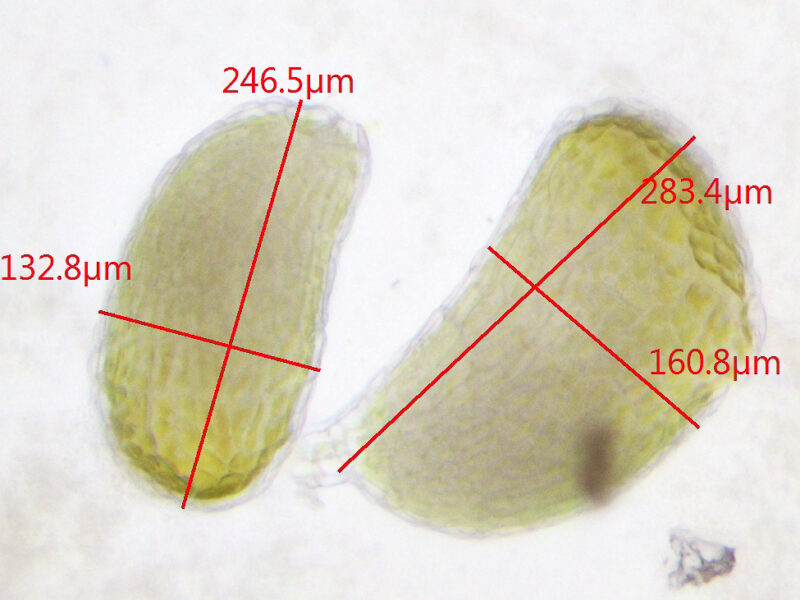Identification notes
When hornworts have sporophytes (the ‘horns’) they cannot be mistaken for much else. They can also be recognised at any time by single, large plate-like chloroplasts in their cells, a unique character in bryophytes. But what is the best way of distinguishing Phaeoceros laevis from the three other British and Irish species of hornwort?
P. laevis is dioicous and both sexes have opaque, not very incised thalli. Accurate identification relies on male characters. You will know if you have found a male plant as the upper surface of the thallus will be covered with small pits – these contain the antheridia. These pits are very conspicuous in P. laevis, less so in Anthoceros, which also has a somewhat frilly-edged and translucent thallus.
Measuring the length of the antheridial body – an oblong orange-brown object on a short stalk – is important. Each antheridial pit of P. laevis contains up to 6 of these bodies. To measure them, you have to remove them from their pit, which is not as hard as it sounds. With two pairs of fine forceps put pressure on opposite edges of a pit, as if you were squeezing a spot, the antheridial bodies will simply pop out and you can then mount them on a slide and measure their length and width.
If you are lucky enough to find a Phaeoceros with male and female organs of the same thallus then you have found the much rarer – and monoicous – P. carolinianus.
Read the Field Guide account
